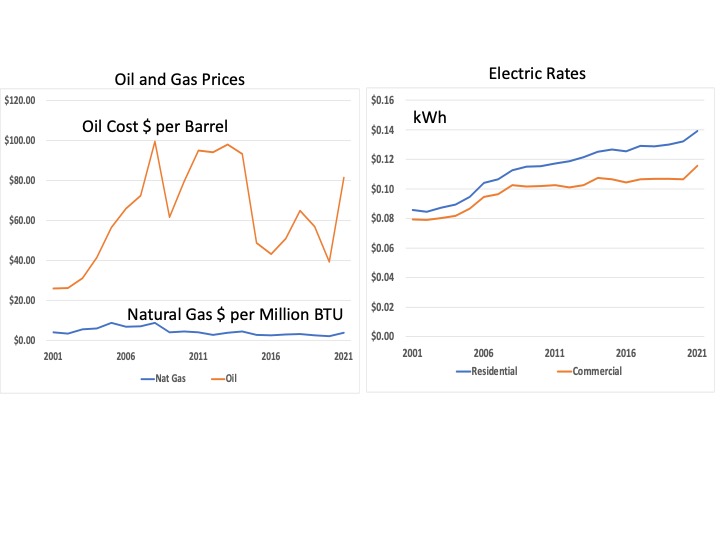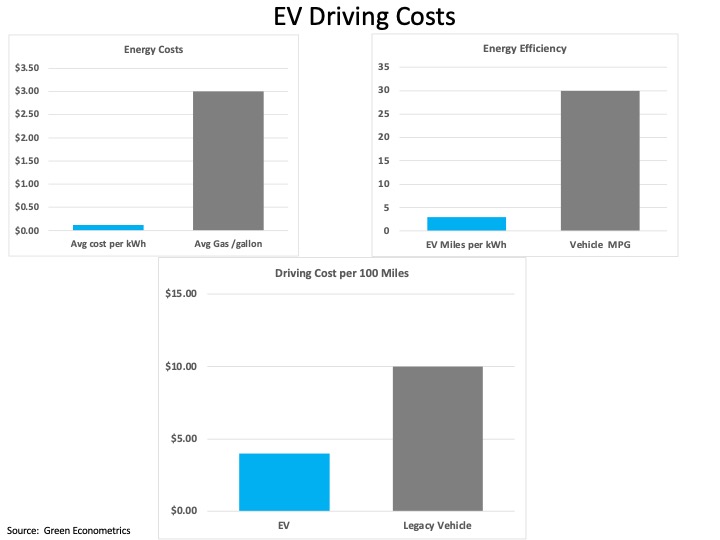Category Carbon Economics
Oil Spills, Energy Costs and EVs
How can IoT sensors help businesses achieve sustainability goals
https://marketscale.com/industries/industrial-iot/putting-iot-to-work-for-u-s-sustainability-goals/
MarketScale Podcast with Daniel Litwin
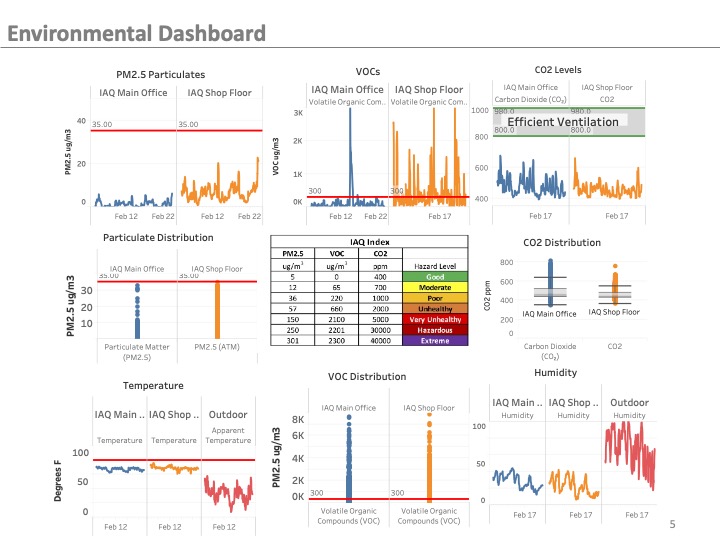
Why More Energy Storage Investments are in Everyone’s Best Interest
Disruptive Innovation – Why Energy Storage is Crucial Infrastructure
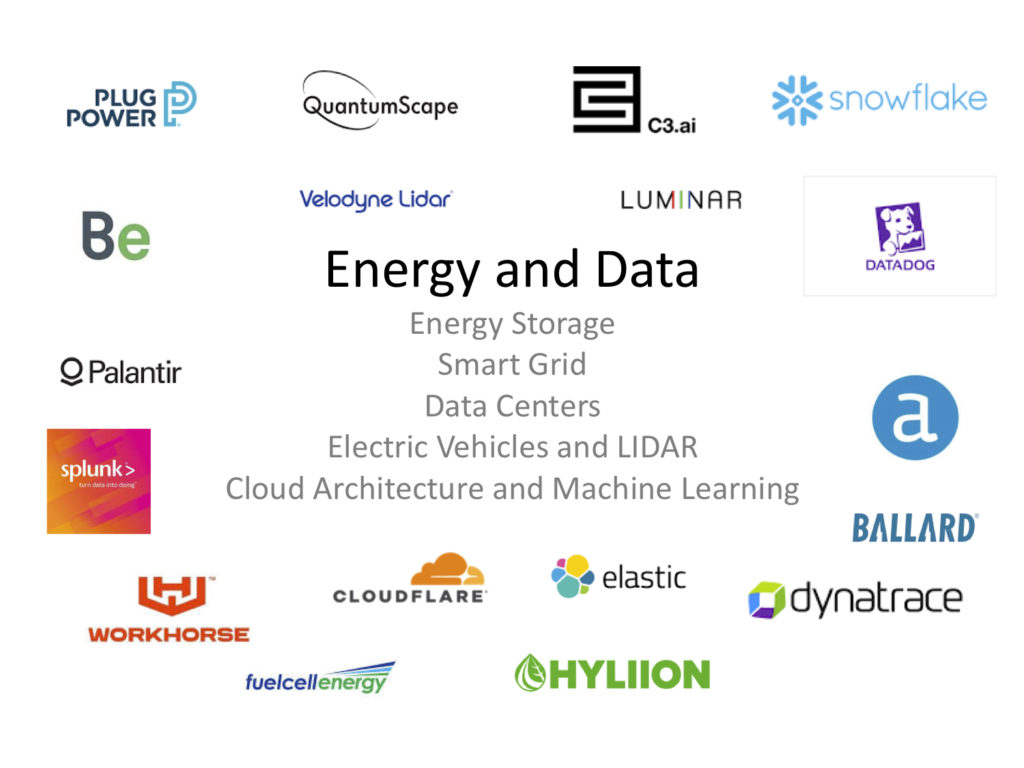
From the inception of the Industrial Revolution several core ingredients enabled the transformation and growth of industry. Among these core building blocks of the Industrial Revolution namely: access to risk capital, visionary entrepreneurs, available labor, technology, resources and energy. Technology and energy play a crucial role in not only growing industry but enable scale. Technology can open new markets and provide advantage through product differentiation and economies of scale. Energy is literally the fuel that scales operations.
Today technology, built from knowledge and data, is how companies compete. Energy now emerges as even more integral in scaling operations. Just as James Watt developed the first steam powered engine in 1606 commencing the Industrial Revolution, it was the access to available coal with the use of the steam powered pump, invented by Thomas Savery in 1698, that allowed greater access to coal that gave scale to industry.
Most recently, the pending transaction of Salesforce’s (CRM) acquisition of Slack (WORK) after acquiring Tableau last year serves as a reference in valuing the importance of technology is to sustaining market value. The market value of seven companies accounts for 27% of the approximately $31.6 trillion for the S&P 500. Evaluating the industry and market impact of innovative technologies can be viewed through the lens of stock valuations, particularly as it applies to mergers and acquisitions. This article reviews the companies and the technologies from the perspective of market sales opportunity and the economic impact of the technologies based on the price/performance disruption to the industry.
So why are we focusing on energy and data today? Energy, predominantly hydrocarbon fuels such as oil, natural gas and even coal is how people heat their homes and buildings, facilitate transportation, and generate electricity to run lights, computers, machines and equipment. In addition, there is substantial investment focus on the digital economy, Environmental and Social Governance (ESG), and innovative technologies. A common thread among these themes is energy and data.
Data and Energy are the pillars of the digital economy. Energy efficiency can reduce carbon emissions, thereby improve ESG sustainability initiatives. Innovative technologies around energy and data are opening new markets and processes from formulating new business models to structuring and operating businesses.
The climate imperative and investing in energy infrastructure and environmental ESGs are predicted on energy efficiency and relevant performance metrics to evaluate investment allocation decisions. Therefore, our initial emphasis begins with a background on energy consumption with focus on electric consumption trends, carbon footprint, Green House Gas (GHG) emissions, sustainability, electric grid resilience, and technologies that impact energy including Electric Vehicles (EV), energy storage, and Autonomous Driving (AD). Data technologies encompass cloud architecture, Software as a Service (SaaS), Machine Learning (ML) analytics, and the importance of data as the digital transformation gives rise to the digital economy.
Digital Economy Performance Metrics
Before we dive into the financial and competitive analysis, let’s review business models that are disruptive to the status quo. That is are innovative technologies capable of rapid scale and efficiency gains that change the economics of the market and business profitability. In addition, disruptive events, driven primarily by technology, often appear as waves as the adoption of innovative technologies expands through the market.
Prominent technological waves such as the personal computer (PC), followed by the internet and smartphones and most recently social media and cloud computer all manifested themselves in engendering new business models and creating new market opportunities that dramatically changed the status quo among leading companies at the time. We will use the internet and mobile technology waves to explain how the introduction of innovative technologies offering vastly improved means of commerce enabled the development of new services that changed the business landscape.
Most recent advances in technology appear as waves and give rise to new business models and markets. The internet is one example. The internet enables the connection and process of communication over a new channel. The internet allowed one-to-one and one to many communications and the ability to engage, transact and scale using a digital platform that tremendously lowered the cost of engagement. Scale is among the most important attributes of the internet because the cost of digital replication is close to zero.
Mobile and smartphones began a new era in the digital world. The smartphone allowed a large portion of the world to interact with the internet for the first time on a mobile device. The mobile wave provided platform that enabled the introduction of a host of new business models. The introduction of the Apple iPhone gave way to several new services and industries all from your cell phone.
Let’s review the business model impact of innovative technologies as it applies to cost structure.
Cost Structure and Disruptive Innovation
As explained by ARK Investment Management’s Catherine Wood, the rate of cost decline can be used as a proxy for evaluating the disruptive impact of innovative technology. Cost structure improves as unit production expands. As first postulated by Theodore Wright, an aerospace engineer, who postulated that “for every accumulated doubling of aircraft production, costs fell by about 20 percent”. Wright’s Law as it is now known is also called the Learning Curve or Experience Curve and it is found across industries that experience different rates of declining costs.
What is important from the perspective of investment firms such as Ark is that the magnitude of disruptive impact can be gleaned from these declining cost curves. Revenue growth can then be correlated from these declining cost curves. Essentially, demand elasticity and future sales can be derived from the rate of product cost declines.
This is why price/performance and scientific metrics play an important role in evaluating products, services and company competitive positions. For example, the average cellular price per gigabyte (GB) of data is approximately $12.37 in 2020 according to Small business trends. Another example in science, is the physical performance of an LED light assessed by lumens the light output to the amount of energy consumed in watts such as lumens/watt (Lm/W). These metrics are points in time. For more context, the changes over time and magnitude of change provide insight into inflection points, trends, patterns and relationships.
As devices become complex, encompassing separate processors for communications, computing, power, video and various sensors, it is the integration and orchestration of the overall device performance that becomes of greater value to the user. So, price/performance, scientific understanding and economics become more attuned to relationships among these varied and interdependent components.
TAM Expansion Attribute
Mega Trends Thematic Research and Analysis
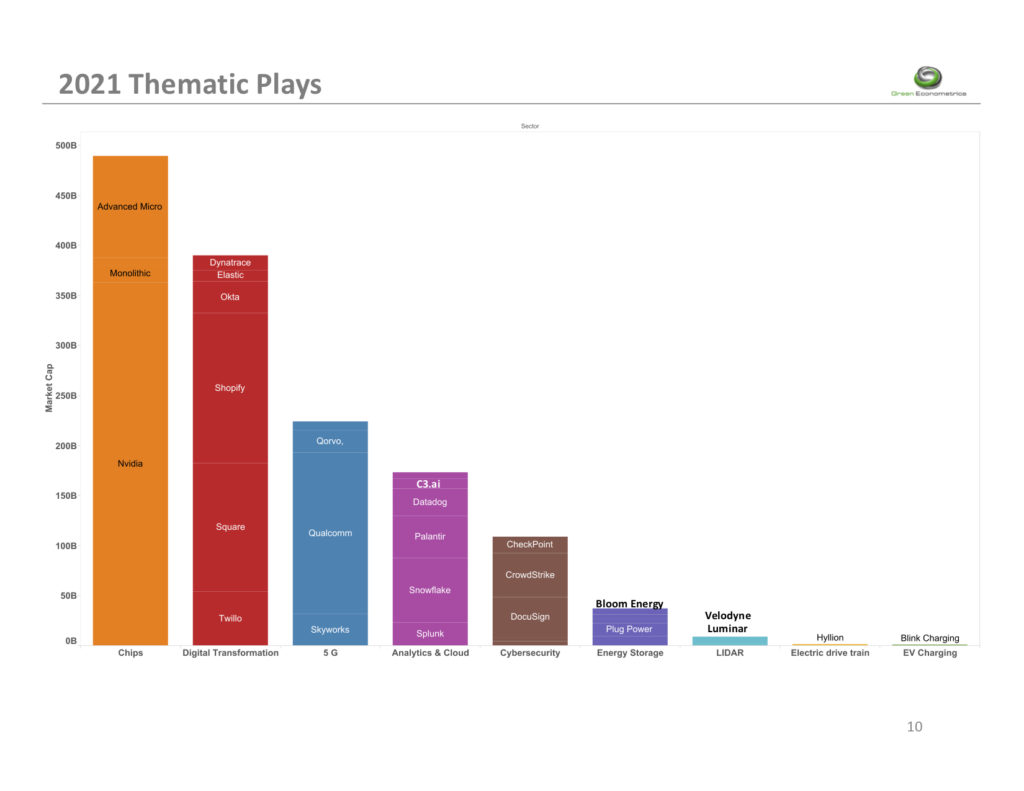
As digital transformation grows, underlying technology platforms become a core differentiator for key players. Our research reveals that current market leaders need to identify and embrace important new technologies now and adapt to the continuous emergence of new innovative platforms — often through M&A activities. In our full report, we take a look at significant technology disrupters and identify key players to watch.
Two overarching themes, data and energy, inform our approach; and our core premise that drives our innovative technology analysis is that as more commerce commences over digital platforms, more energy is consumed and more data is generated. This lens enables us to identify important emerging trends as well as obstacles to progress; while sorting out the technologies and firms most likely to emerge as winners going forward.
Importantly, our ongoing research reveals that there is also a confluence of interactivity between classes of technology that results in cross dependencies, correlation, cross pollination and scale that creates nuances within each segment. It is our implementation of data collection and analysis between segments, comprehensively addressed in our full report, which adds the insight required for confident decision making. Order your copy now.
In our full report, we identify some of the sectoral trends fueling the new digital economy and the innovative technology companies creating value in our research. Let’s break it down by sector:

Energy Storage – is the key differentiator for electric vehicles (EVs) and the end-to-end mobility solutions of the future. It also plays a vital role in energy efficiency and resiliency. Energy storage is a core technology to address energy efficiency; critical to controlling carbon emissions, grid resiliency, and providing EV charging solutions. Energy storage systems have substantial benefits for energy consumers, including: industrial, commercial, public, and households. From cost reduction to business continuity and equipment protection, proper energy management delivers significant business efficiencies. There are, however, associated high switching costs for energy storage to be considered. Our focus in our full, in-depth report includes thorough analyses of Plug Power (PLUG), Ballard (BLDP), FuelCell (FCEL), Bloom Energy (BE) and QuantumScape (QS)
Cloud Architecture – another key sector we examine, provides a very cost-effective means of providing separate layers of data storage, computing and transactional services to enterprises and agencies where reliability, scalability and availability are critical to performance and the maintenance of a competitive edge. Virtualization services enable separation of hardware and software as well as method for separating data from control planes. Innovative tools including Databricks and recent IPO Snowflake provide scale and data integration to manage cloud services and data analytics. Our focus in this niche includes Alteryx (AYX), Datadog (DDOG) Palantir (PLTR) Splunk (SPLK) C3.ai (AI) and Snowflake (SNOW).
Green Econometrics: Important Trends To Watch In 2021
Digital Transformation Becomes The Top Priority
by Charlie McHenry, COO, Co-Founder
The pandemic, and to a lesser extent, global climate change are accelerating digital transformation in business, industry, agencies and non-governmental organizations. This transformation is also a transition – to a new way of doing business on all levels; to a new way of looking at the impact and footprint of our business and personal activities; and to a new normal, that is not likely to look a lot like what we’re used to. This coming year will see a number of existing trends accelerate, and new developments which will underlie and drive major changes in business and operational models.
This report will look at a number of industry sectors, as well as the impact of digital transformation on the public sector. In depth reports on each of these sectors are available by yearly subscription for $950 by request.
We have to start somewhere, so let’s take a look at the rather dramatic and emblematic transformation now taking place in the automobile/truck manufacturing sector.
Why Visual Data Analytics: Discovery, Innovation and Opportunities
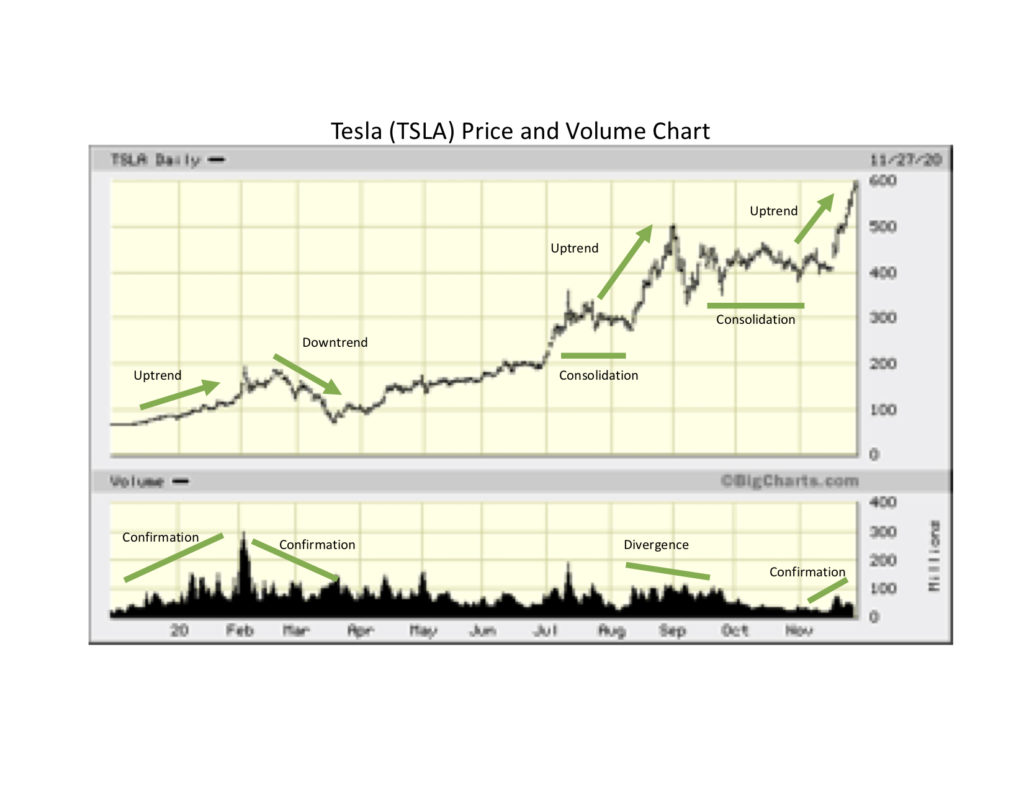
A data analytics framework is applicable to insight discovery; provides a roadmap towards innovation; and enables capabilities that can optimize approaches to new business models and opportunities. The following paper provides examples revealing how and why to apply visual analytics for discovery, innovation and evaluating new opportunities.
Discover how waveforms and patterns are applied to science and finance, and how customer usage patterns can reveal new approaches to market micro-segmentation and persona classifications. Lastly we’ll reveal how the deployment of IoT devices across the enterprise fuels data flow in the physical world regarding the performance and conditions of business assets.
Introduction
Our theme is applying visual data analytics as a tool for discovery, innovation and evaluating market opportunities. We show how two metrics, price and volume, are able to convey insight and establish price targets for technical analysis. Why energy consumption patterns and waveforms lend themselves to understanding science and classifying human behavior. How proxy metrics can serve as measures for physical events. Why linking granular visibility into processes and the monitoring of conditions and operating performance help build an advantage in the digital economy.
Green Econometrics relies on visual analytics as a core fabric in our data analytics frameworks because visual analytics are integral to discovery, innovation and new opportunity development. Visual insights are easy to understand – allowing business objective and performance metrics to seamlessly transfer across business units. So how do we do it?
Why Analytics and Business Intelligence
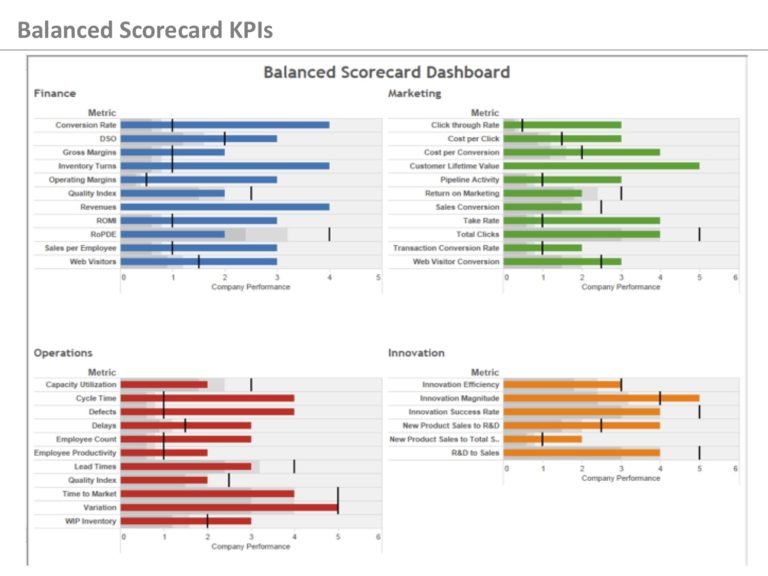
Analytics and Business Intelligence provide a framework for process improvement that drives operating efficiencies and enhances business value. Most business owners and managers want to increase business value to benefit shareholders, stakeholders, and investors. Individual investors and investment professionals direct capital towards companies that can demonstrate sustainable value. Changes to performance in revenues, margins, and risks can become a catalyst to invest or divest. Business value is often measured by three performance criteria – revenues, operating margins, and risks. Therefore, factors that contribute to revenue growth, margin expansion, and risk mitigation become the overarching goals to improve business value. We add that sustainable value includes resource conservation and efficiency.
Just how does analytics and business intelligence address revenues, costs, and risks in improving business value? To understand the integration of analytics and business intelligence in improving business value, let’s look at two initiatives in formulating business strategy.
In his book Measure What Matters, John Doer describes how establishing goals and objectives along with the corresponding performance criteria provide a better method to assure that key metrics are aligned to goals and business objectives. This process of mapping performance metrics to business objectives defined as Objectives and Key Results (OKRs) determine what is relevant to measure and track. Adding to OKRs is the balanced scorecard approach which pulls reporting data from each business unit and department and explained by Robert Kaplan and David Norton in their Harvard Business Review article “Using the Balanced Scorecard as a Strategic Management System” to provide an assessment of conditions and performance.
Analytics Framework for Sustainability
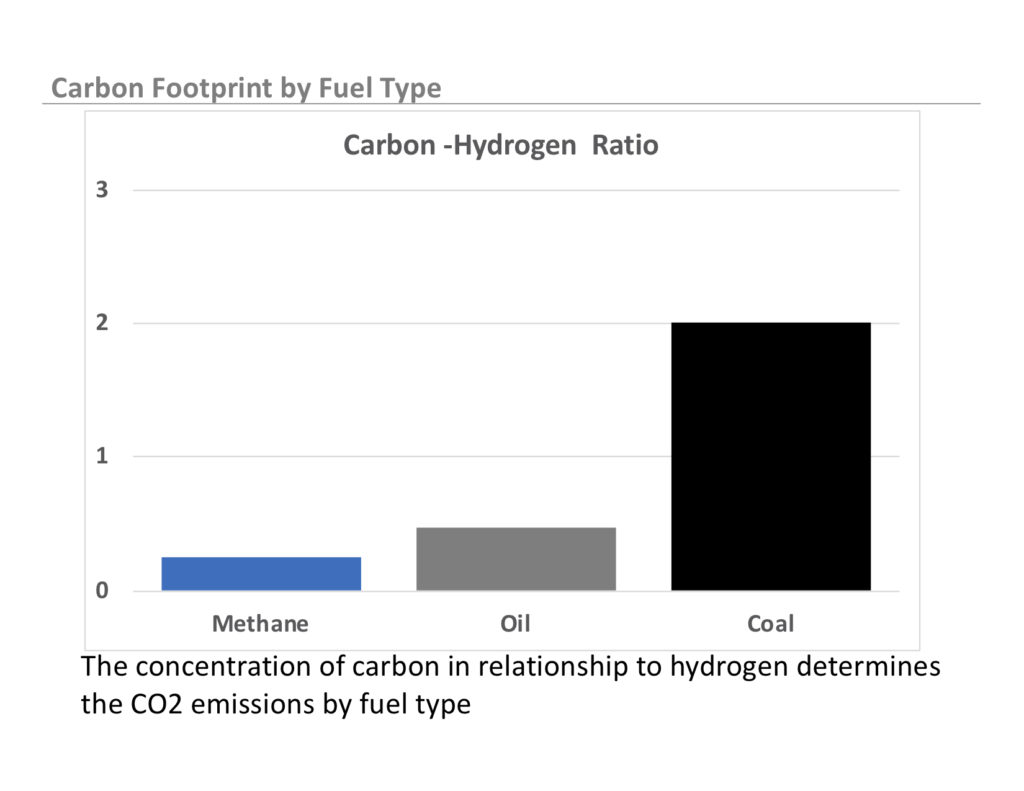
Why the analytics framework for process improvement can translate into substantial benefits around sustainability improvements and energy efficiency. The Coronavirus pandemic has upended social interaction – a new normal, with social distancing and protocols, and so why does sustainability play a crucial role in facilitating a smoother transition into the is new normal. The reason is sustainability engenders confidence. Knowing facilities are safe and that indoor air quality monitoring is vital for occupant health and safety builds confidence. Health and safety are also essential in generating the confidence that changes consumer behavior. Therefore, the process by which you implement a sustainability plan plays an expanding role in orchestrating the activities that adhere to values and performance.
A sustainability framework provides the roadmap to monitor, measure and curate data thus enabling performance benchmarking of conditions and processes. The analytics framework serves as a roadmap to utilize insight gained from data analysis. Currently available tools such as data visual analysis, machine learning algorithms and cloud computing architecture enable cost effective approaches to achieve business and sustainability objectives.
A sustainability framework provides the foundation to drive business value across several dimensions and performance metrics. The use of the sustainability process can drive business value, improve our environment, enhance customer loyalty, and better engage healthier and happier employees while rewarding shareholders and stakeholders with higher business valuations.
Economics of Oil
Advances in technology such as seismic imaging with Dawson Geophysical and horizontal drilling with Schlumberger have dramatically changed the economics of oil and gas extraction. The change in oil economics is so profound that the cost structure of hydrocarbon fuels will reverberate through the global energy market and impact pricing of renewables energies and investment decisions. So profound are these changes that the US has surpassed Saudi Arabia and emerged as the world’s largest oil producer.
With the price of oil falling as a result of large production gains in US oil production. The price of oil is may fall below $40 per barrel according to an article in Barron’s The Case for $35 a barrel Oil suggesting further oil price declines are possible.
2010 Update on Oil Consumption and CO2 Levels?
The worst global economic recession in since the Great Depression seems to be abating. Given the severity of the financial crisis, it might serve to review what impact the recession has had on oil consumption. In addition, what impact did the decline in oil consumption have on atmospheric CO2 concentration levels?
Since 2006, global oil consumption declined by 1.1 million barrels per day (BPD) from 85.2 in 2006 to 84.0 in 2009. Oil consumption in the US declined 9% to 18.8 million from 20.7 million BPD in 2006. Europe experienced a decline of 7% over this same period with a drop of 16.5 million to 15.2 million BPD. However, over this same period, oil consumption in China and India increased 16% and 13%, respectively. This data was complied from the US Department of Energy Information Administration (EIA) and is displayed in the following charts.
To measure how significant the impact has been, the following charts provide some insights in evaluating how deteriorating world economies may have impacted oil consumption and secondly, whether reduced oil consumption has mitigated heightened CO2 levels.
Figure 1 Global Oil Consumption 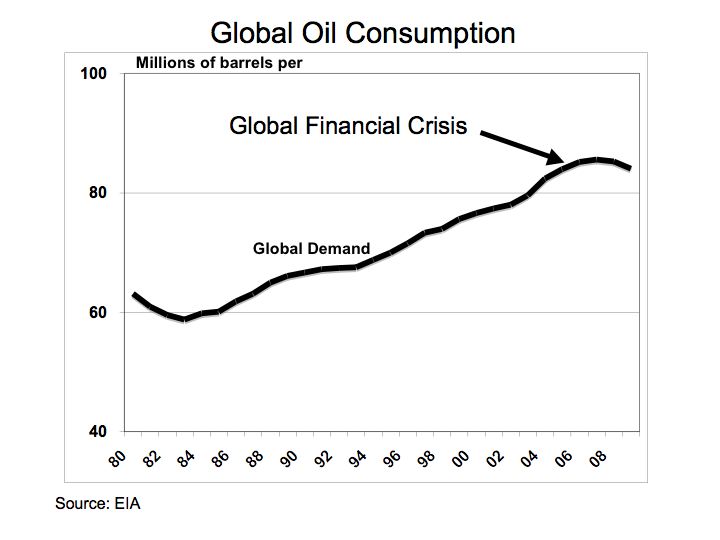
Source: EIA
From Figure 1, the impact of the global financial crisis is depicted with the decline in global oil consumption. When a comparison is applied to oil consumption between the US China, and India, the relative drop in oil consumption is less discernable.
Figure 2 US, China, and India 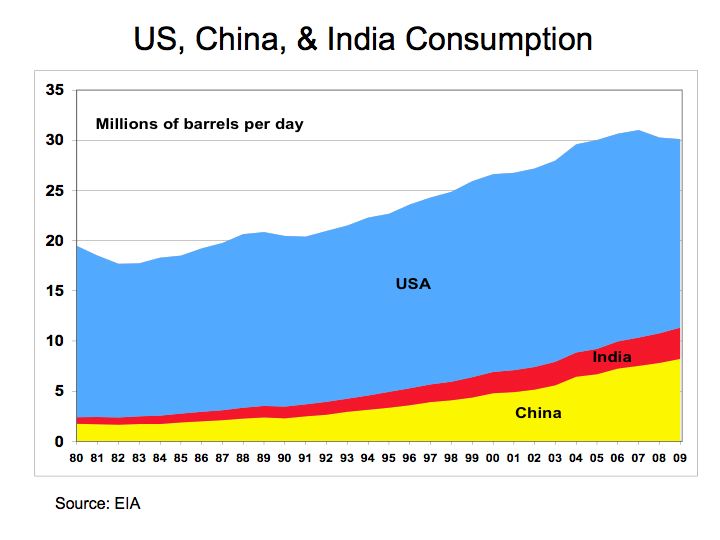
Source: EIA
Figure 2 provides a summary of oil consumption of the US, China, and India. A measurable decline in oil consumption can be seen, but only in the US market.
Figure 3 China and India 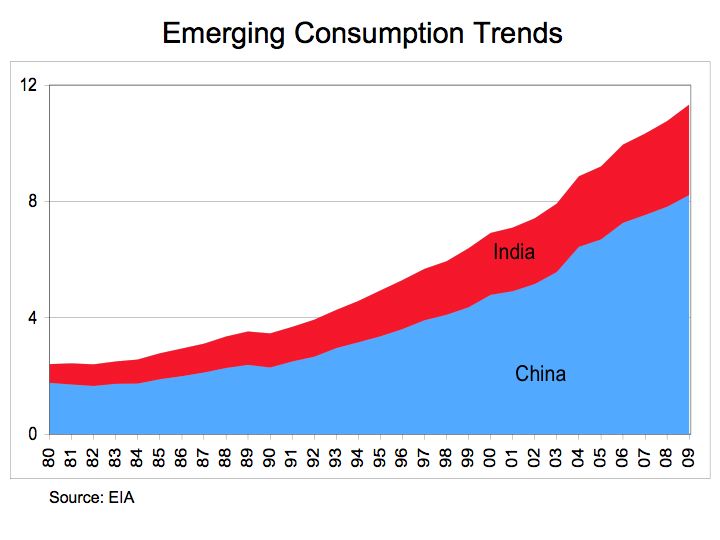
Source: EIA
Figure 3 demonstrates the steady and pronounced growth in oil consumption for China and India. Despite the global financial crisis, oil consumption significantly expands in China and India due to secular growth from rapid industrialization in both countries. When measured with respect to the European market, China and India have grown from 15% of the oil consumption rate of Europe in 1980 to over 74% of the consumption level in 2010.
Figure 4 CO2 Levels 
Source: NOAA
With the decline in global oil consumption, perhaps a positive benefit would be a fall in CO2 levels. The atmospheric CO2 readings in part per million (PPM) where taken from the National Oceanic and Atmospheric Administration (NOAA) from the Mauna Loa CO2 Levels monthly measurements. Figure 4 illustrates the average annual atmospheric CO2 concentration readings in Mauna Loa, Hawaii from 1980 through 2010.
The bottom line is even while global oil consumption declined during the recession, growth in China and India remained unabated and subsequently, CO2 concentrations in the atmosphere continue at elevated levels.
In memory of Jamie Kotula – loved by family, friends, teammates, and school.
Should we be Concerned over Elevated CO2 levels?
With the oppressive heat and appalling humidity along the Eastern Seaboard, one considers the possibility of climate change and the impact of that greenhouse gases may have on our environment. Without developing statistical regression models to gleam any semblance of understating of carbon dioxide’s impact on climate change, let’s just look at some charts that illustrate the changes of CO2 levels though history.
While industry experts and scientist debate whether elevated CO2 levels have an impact on climate change, the scientific data taken from ice core samples strongly suggests CO2 levels have remained in a range of 180-to-299 parts per million (PPM) for the last four-hounded thousand years. Scientists have developed models to suggest that rising CO2 levels contributes to global warning which are subsequently followed by dramatic climate changes that lead to periods of rapid cooling – the ice ages.
Scientific theories suggest that rising global temperatures melts the Polar ice which allows substantial amounts of fresh water to enter the oceans. The fresh water disrupts the ocean currents that are responsible for establishing a nation’s climate. As oceans warm near the equator, the warmer water travels towards each of the Polar areas. The cooler water near the Polar areas sinks and travels towards the equator. These ocean currents allows for stable climates. The issue is that fresh water is less dense because it is not salty like seawater. Therefore, the fresh water does not sink like the cold salinated seawater thereby disrupting the normal flow of the ocean currents.
Figure 1 CO2 Ice Core Data – illustrates the level of CO2 over the last four-hounded thousand years. The Vostok Ice Core CO2 data was compiled by Laboratoire de Glaciologie et de Geophysique de l’Environnement.
Ice Core Data
Figure 1 CO2 Levels – Vostok Ice Core CO2 
Source: Laboratoire de Glaciologie et de Geophysique de l’Environnement
If this Ice Core CO2 data is correct, then the current data on atmospheric CO2 levels is quite profound. CO2 data is complied by the National Oceanic and Atmospheric Administration NOAA at the Mauna Loa Observatory in Hawaii. The latest trend indicates CO2 levels for June 2010 are at a mean of 392 ppm versus 339 in June 1980 and 317 in 1960. Clearly these CO2 levels are elevated. The question is what is the impact on our environment.
Aside from the catastrophe in the Gulf of Mexico and the dire need to find an alternative to our dependence on oil, should we not accelerate our efforts to find an alternative energy solution and as a way to mitigate the impact of CO2 on our environment? Maybe investment into alternative energy could help solve multiple problems.
Figure 2 Mauna Loa CO2 Readings 
Source: Source data published by the National Oceanic and Atmospheric Administration (NOAA)
The bottom line is that we need to consider the possibility that elevated CO2 levels in our atmosphere could potentially have a detrimental impact on our climate. In any event, limiting our dependence on fossil fuels, the main contributor to CO2, should be paramount. Let us not forget oil is supply-constrained – there are no readily available substitutes aside from electric vehicles, and without a strategy to embrace renewable energy, supply disruptions will have a painful impact on our economy, national security, and environment.
Falling Panel Prices could bring Solar closer to Grid Parity
Rising inventory levels of photovoltaic (PV) panels and new production capacity coming online is driving solar PV prices lower and thereby, bringing solar energy closer to grid price parity. With the release of the latest earnings of solar energy companies, Wall Street’s keen attention to revenue guidance, inventory levels and pricing are paramount in diagnosing the health of the solar energy industry. Expectations call consolidation of the solar industry with some key players gaining market share and for others it becomes more challenging. However, despite the turbulence in the industry, consumers will benefit in the near-term as solar PV prices fall and government incentive fuel growth in solar PV deployment.
To get a better perspective on the solar PV industry, let’s examine inventory levels for some of the leading solar PV suppliers. The following chart, Figure 1, compares inventory levels in relationship to sales volume. While inventory levels have increased, the level of inventories to sales is not egregious
Figure 1 Sales and Inventory levels 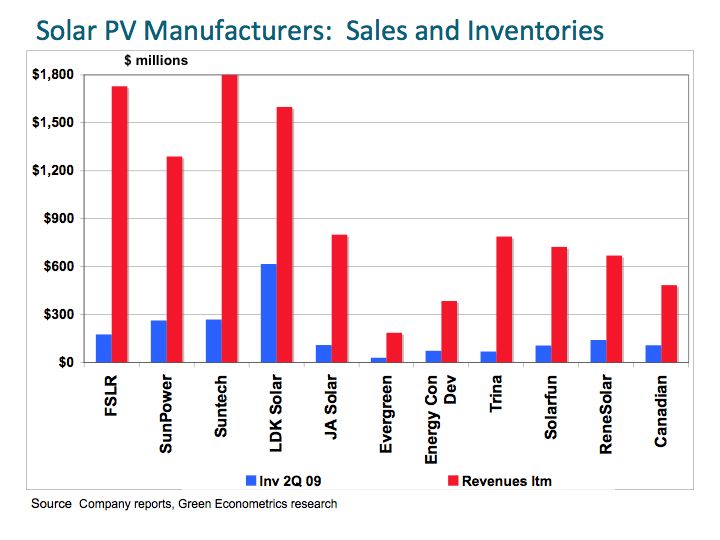
While it is important to control inventory levels in relationship to sales, revenue growth is predicated upon price, performance, and return on investment for prospective customers. Thin-film PV has emerged as the low-cost solar solution even with its lower efficiency levels in comparison to mono-and poly-crystalline PV panels. Thin-film still offers a lower cost/watt than crystalline PV, see Solar Shootout in the San Joaquin Valley , but prices for crystalline PV are falling as a result of rising production capacity and inventory levels.
Figure 2 Market Value 
In Figure 2 Green Econometrics is comparing the market value of some of the leading PV suppliers as measured by their respective stock prices. In the valuation of solar PV suppliers, the stock market appears to be betting heavily on thin-film PV, as First Solar (FSLR), the leading thin-film PV supplier, enjoys a market value that accounts for over half the value of the entire solar industry. FSLR is positioned as the low-cost supplier in the solar industry with its announcement of $1 per Watt reducing its production cost for solar modules to 98 cents per watt, thereby braking the $1 per watt price barrier. However, new panel suppliers, mainly from China are pushing prices lower for poly-and mono-crystalline panels suppliers. ReneSolar (SOL) is seeing average selling prices for wafers at $0.93 per watt and bring PV panels prices to under $2.00 per watt.
There appears to be a lot riding on the success of thin-film PV and as prices fall for crystalline PV, the closer we get to grid parity. In the following chart, Figure 3, price for crystalline PV have declined quite dramatically in the last 30 years. According to the Energy Information Administration, in 1956 solar PV panels were $300 per watt, and in 1980, the average cost per solar modules was $27/watt and has fallen precipitously to approximately $2/watt in October 2009. As the installed cost of solar PV falls closer to $4/watt, pricing per kilowatt-hour (KWH) (depending on your climate and geography), equates to approximately $0.16/KWH that would be inline with utility rates after rates caps are removed.
Figure 3 Solar PV Prices 
The bottom line is that despite the lower PV panel costs; we are still not at parity with hydrocarbon fuels such as coal and oil. Carbon based taxes or renewable energy incentives as well as more investment into alternative energy should improve the economics of solar and wind and bring us to grid parity.
A Case for Natural Gas CHP Systems
A combined heat and power system (CHP) is the cogeneration or simultaneous generation of multiple forms of energy in an integrated system. CHP systems consume less fuel than separate heat and power generating systems. According to the Environmental Protection Agency in their Combined Heat and Power Partnership report, (EPA), CHP systems typically consume only three-quarters the amount of energy separate heat and power systems require. By combining both heat and power into the same energy systems, efficiency gains for the total system. Heuristically, high temperature and high pressure fuel ratios results in higher efficiency systems. In addition, the thermal energy produced from the CHP system could be used to drive motor applications or to produce heat, steam, and hot water.
As an initial step to reducing greenhouse gas (GHG) emissions, natural gas turbines could improve overhaul efficiency of 65-80%. In addition, the CHP offers lower greenhouse gas (GHG) emissions in comparison to conventional standalone systems. Gas turbines CHP systems operate under a homodynamic principle called the Brayton cycle. The design characteristics of a CHP gas turbine provide: 1) high electric and total system efficiency; 2) high temperature/quality thermal output for heating or for heat recovery steam power electric generation; 3) offer options for flexible fuels such as propane, natural gas, and landfill gas; 4) high reliability with 3-to-5 years before overhaul running 24/7; and 5) significantly lower GHG emissions.
Figure 1 Gas Turbine CHP System
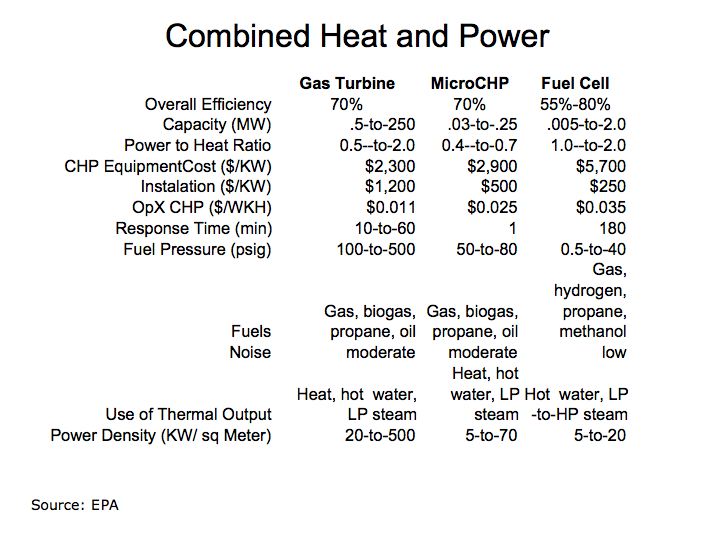
Figure 1 demonstrates the mechanics and variables of a CHP system. In summary, the CHP technology enables the supply of efficient heat and power while minimizing GHG emissions. Total CHP efficiency is defined as the sum of net power produced plus the thermal output used for heating divided by total fuel input.
The use of methane (natural gas) as the main fuel for the CHP system offers advantages because methane offers the highest hydrogen-to-carbon ratio among fossil fuels, thereby, combusting with the lowest GHG emissions. According to EPA data, the emissions NOx particulates from gas turbines ranges between 0.17-to-0.25 lbs/MWH with no post-combustion emissions control versus 1.0-to-4.2 lbs/MWH for coal fed boilers. The carbon content of natural gas is 34 lbs carbon/MMBtu in comparison to coal at 66 lbs of carbon/MMBtu.
There are two valuable metrics used to measure efficiency for CHP systems. One is the total system efficiency which measures the overall efficiency of the CHP system including heat and electric and the other is the effective electric efficiency which is useful in comparing the CHP electric production versus grid supplied power. These two metrics, the total system and effective electric efficiencies are important for evaluating CHP system. The following provides a guideline foe measuring these two efficiency metrics and can be found at EPA – Efficiency Metrics for CHP Systems
Figure 2 CHP Efficiency

The economics of the CHP system depends on effective use of thermal energy n the exhaust gases. Exhaust gases are primarily applied for heating the facility and could also be applied to heat recovery steam generators (HRSG) to produce additional electric power. The total efficiency of the CHP system is directly proportional to the amount of energy recovered from the thermal exhaust. Another important concept related to CHP efficiency is the power-to-heat ratio. The power-to-heat ratio indicates the proportion of power (electrical or mechanical energy) to heat energy (steam or hot water) produced in the CHP system. The following provides an overview of the economics of a CHP system.
Figure 3 CHP Economics
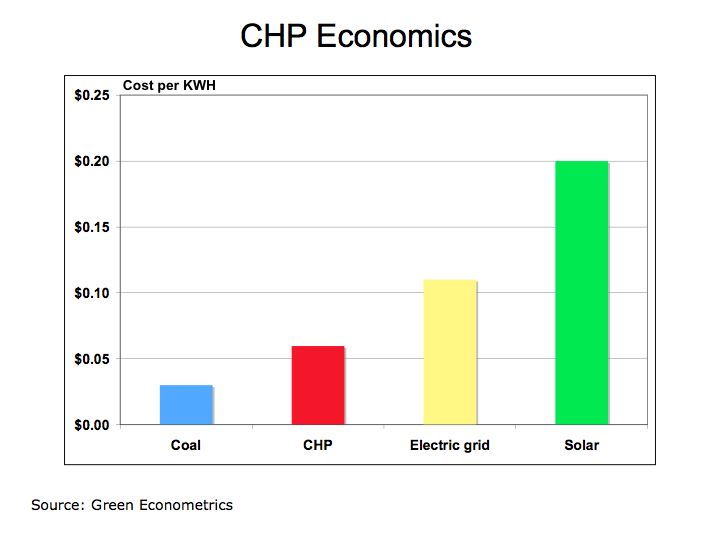
Figure 3 illustrates the economics of a CHP system in comparison to competing energy sources. While the CHP does not have the low cost of coal in producing electric, the economic value of reducing GHG emissions is quite significant and beyond the scope of this article. However, natural gas prices remain below that of oil and better ways of capturing heat exhaust will further improve CHP efficiency. The bottom line is that natural gas produces less GHG emissions than coal or oil therefore; businesses should consider the benefits of CHP as a source of heat and power.
Formulating an Effective Energy Efficiency Strategy with Measurement and Verification Copyright © 2009 Green Econometrics, LLC
The development of an energy efficiency strategy incorporates analysis of energy expenditures and energy consumption. The energy strategy must incorporate dynamics between costs, budgets and the consumption of energy including the monitoring of kilowatt-hours (KWH) of electricity and liquid hydrocarbon fuels consumed. By analyzing both the financial and the energy consumption components we are better positioned to frame the scope of the energy efficiency projects.
We start with a comprehensive energy audit analyzing energy consumption and expenditures. After determining which activities offer the fastest, cheapest, and greatest economic impact we are then able to define the scope of energy efficiency projects. The next step in the energy strategy process is to assess, rank and specify energy saving opportunities. At this phase, we have a broad understanding of the scope of energy efficiency projects within the appropriate budgetary considerations.
Conduct Energy Audit and Analyze Energy Spending
Upon analysis of the energy expenditures and the appropriate budgetary considerations, we commence with an energy audit to examine the dimensions of energy consumption. The energy audit establishes an energy efficiency baseline for buildings and vehicles. In the energy audit, energy consumption is measured by source and activity using monitors attached to branch circuits, gas pipes, and fuel lines. In this manner, energy consumption is evaluated from a financial and physical perspective and baseline usage patterns are established for electricity and other fuels.
During the energy audit, an analysis of energy intensity is measured. For buildings, energy consumption is measured in kilowatt-hours per square-foot to identify which activities consume the most energy. The energy intensity measurements are then ranked by consumption activity and compared to actual energy expenditures.
The purpose of the energy audit is to establish a baseline of energy consumption and the energy intensity associated with each building, department, vehicles, and/or activity usage category. By constructing an effective energy efficiency strategy that identifies and measures energy demand by activity, a better understanding of economic- and financial-impact is established. The critical component to the energy audit is measurement and verification were wireless Internet-based energy monitoring provide data before and after energy efficiency projects commence. The energy audit and energy monitoring systems together with financial analysis of energy consumption serve as the framework to rank and assess energy efficiency projects.
Heuristically, energy consumption in buildings is tied to lighting; and heating, cooling, and ventilation systems see Energy Intensity . The following chart, Figure 1 serves to illustrate which activities contribute most to energy consumption in buildings.
Figure 1 Kilowatt-hours (KWH) per Square Foot 
According to information provided by the DOE, lighting, cooling and ventilation alone account for nearly two-thirds of all energy consumption in a building. For perspective, electric energy demand is increasing at an annualized rate of 1.6%. According to the Energy Information Administration (EIA), demand for electricity grew 21% between 1995 and 2006.
The energy consumption audit provides a means to assess which activities should be further analyzed for energy efficiency projects. The baseline energy usage measured in KWH per square foot serves as the framework to evaluate that locations and activities could benefit from lighting retrofits, equipment upgrades, structural improvements, and energy monitoring systems.
As a consequence of increasing energy consumption in buildings, electric generation relies extensively on hydrocarbon fuels that carry adverse environmental effects. Figure 2 illustrates the proportion of coal and other hydrocarbon fuels that are used to generate electricity in comparison to renewable energy sources. Coal still accounts for nearly half of all electric generation while contributing the most in terms of harmful emissions such as carbon dioxide, nitrous oxide, and sulfur dioxide.
FIGURE 2: Electric Generation Method 
As part of the energy audit process for buildings, an energy consumption analysis of lighting and HVAC systems is evaluated along with the building’s insulation R-Value (resistance to heat flow where the higher the R-value, the greater the insulating effectiveness). In addition to lighting and HVAC systems, specialized equipment may also account for large energy demand. During our energy audit, we plan to identify and measure energy usage of special equipment in order to construct energy efficiency initiatives with clearly defined and measurable energy reduction targets.
Energy efficiency for transportation vehicles is one of the most significant factors to manage. The fact that there are no real substitutes for oil in the transportation industry illustrates two important points: 1) structural changes to driving patterns are required to see appreciable changes to oil consumption and 2) government authorities are vulnerable, with no readily available substitutes for oil, supply disruption could negatively impact transportation systems. Therefore, we emphasize fuel management systems for fleets and vehicles that monitor fuel consumption and efficiencies. DOE studies have indicated that changing driving habits could improve fuel efficiency by up to 30%.
Vehicle mounted devices that integrated fuel consumption feedback as the vehicle is driven promotes higher fuel efficiency. These off the shelf products are cost-effective, offering payback in months that dramatically improves fuel efficiencies. Aside from routine tune-ups, limiting weight, and checking tire pressure, augmenting driving patterns through gauges that provide feedback on fuel efficiency make the difference in saving energy.
In most situations, fuel management systems can be installed without significant mechanical aptitude. The ScanGaugeII from Linear-Logic is useable on most vehicles manufactured after 1996 including Gas, Diesel, Propane and Hybrid Vehicles and are designed to be installed by the consumer with plug-and-play instructions.
Identify and Measure Energy Demand by Activity
From the Energy Audit, the energy intensity of targeted buildings and fuel efficiencies of official vehicles are established. In buildings, it’s the lighting and heating, ventilation, and cooling that comprise the bulk of energy consumption.
Heating, ventilation, and cooling represent a significant portion of energy consumption in buildings and are a priority target for energy analysis. The Seasonal Energy Efficiency Ratio (SEER) is employed as an assessment of the equipment and analyzed in conjunction with building insulation. The efficiency of air conditioners is often rated in SEER ratio, which is defined by the Air Conditioning, Heating, and Refrigeration Institute and provides a standard unit measure of performance. The higher the SEER rating of a cooling system the more energy efficient the system is. The SEER rating is the amount of BTU (British Thermal Units) of cooling output divided by the total electric energy input in watt-hours.
For heating systems in a building, Annual Fuel Utilization Efficiency (AFUE) is used to measure and compare the performance of different systems. DOE studies have indicated that even with known AFUE efficiency ratings, heat losses defined as idle losses contribute to degradation in heating system efficiency,
To analyze energy consumption of heating and air conditioning systems (HVAC), we evaluate the building’s R-Value in comparison to the energy efficiency of the current heating and air conditioning systems. The energy demand evaluation includes a cost-benefit analysis comparing options in either HVAC system upgrade and/or improvements to the building’s insulation R-Value. By comparing the buildings R-Value in conjunction with HVAC efficiency performance, projects offering the greatest cost effectiveness are identified. The building’s R-Values can be measured using FLIR Systems infrared camera and software system. In this manner, the replacement cost of an HVAC system and costs to improve the building’s R-Value are analyzed to measure economic benefits. This information will allow the building owner to make an informed decision on whether any energy efficiency investment into HVAC upgrade or improvement to R-Value demonstrate economic benefit, i.e. positive financial return.
Consideration for heating and cooling systems upgrades are assessed by equipment SEER and AFUE ratings, installation costs, and efficiency payback. After equipment assessment is complete, proposals will be provided along with estimates for upgrade costs and payback analysis.
Benchmark and Analyze Energy Intensity
After conducting the energy audit, and compiling data on energy usage by activity category, we benchmark and analyze energy projects offering the greatest opportunities. As illustrated in Figure 3, energy efficiency for lighting systems can be substantially improved by retrofitting legacy light fixtures with higher efficiency fixtures and bulbs.
The energy audit and analysis provide the framework to evaluate energy efficiency projects. By analyzing energy consumption and the economic benefits associated with the energy savings projects, the most efficient and economically beneficial initiatives are identified and ranked.
FIGURE 3: Energy Savings in KWH per Square Foot Figure 1 Kilowatt-hours (KWH) per Square Foot 
Establish Measurable Goals and Objectives
To establish relevant goals and objectives we are evaluating projects that are adhering to the SMART goal approach: specific, measurable, attainable, realistic and timely. Energy efficiency gains are most pronounced with lighting retrofits and energy monitoring in buildings in buildings and energy monitoring in vehicles.
After conducting an energy audit, analyzing energy consumption activities and the economics of energy efficiency projects, realistic and achievable energy savings goals are defined. Key performance metrics for energy savings are defined for buildings and vehicles. Key performance indicators are established for each project. For example, KWHs saved are defined for lighting retrofit projects, efficiency improvements for HVAC system upgrades, R-Value improvements for building insulation, and MPG gains for vehicles.
For each energy savings project, timelines are established with clearly defined milestones. Energy projects are presented with costs; expected energy savings measured in energy and dollar units, cost benefit analysis, and timelines.
Architect the Deployment of Energy Monitoring Systems
One of the first energy initiatives to consider in any energy savings project is the installation of an energy monitoring system for vehicles and buildings. Energy monitoring systems demonstrate the fastest and most economical pathways to achieving energy savings.
Energy monitoring systems for motor vehicles also demonstrate positive economic returns and real energy savings. The $180 energy-monitoring device with 10% fuel efficiency gain achieves breakeven at 14,500 miles with gasoline costing $2.50 a gallon.
Evaluate Feasibility of Renewable Energy Projects
Renewable energy projects such as solar and wind energy systems are often costly with long payback periods. Without tax incentives and grants, renewable energy projects are unable to demonstrate positive financial returns. However, utility rates for electric are expected to increase, improving the case for renewable energy projects. To improve the viability of alternative energy projects, energy efficiency projects such as lighting retrofit serve to lower energy consumption and therefore enhance the feasibility of solar and wind energy projects.
Oil Consumption Impacted More by Price than Deteriorating Economic Conditions
The fall in oil consumption was most dramatic following the escalating price of crude oil to $145.16 per barrel on July 14, 2008 then at any other point over the last several years. Price elasticity, a key concept in Economics 101, which measures the impact of price change to changes in unit volume sold, is helpful in determining which products have readily available substitutes or which, like oil are inelastic with no real substitutes.
As illustrated by Benjamin Graham and David Dodd in their book Security Analysis, 1940 edition, during the 1930’s the economy had a dramatic impact on spending and consumption particularly on discretionary items such as travel. In one illustration, the change in demand was most pronounced in railroad revenues where tickets purchased for railroad travel, declined 51% from 1929 to 1993 as measured by gross receipts for the railroad industry. Over this same period, spending on the consumer staples (inelastic demand), such as electricity encountered a decline of only 9%.
While almost everyone would agree that the current economic climate is one of the most challenging since the 1930’s, a quick review of oil consumption over the last several years illustrates that demand has not significantly contracted, suggesting driving habits only changed when prices escalated to over $100 per barrel. Oil consumption dropped only 4.9% from January 2008 through January 2009.
Figure 1 Oil Consumption 
As seen from Figure 1, the sharp drop in oil consumption in September 2008 of 8.3% appears as an aberration when measured over the whole year. The fact there are no real substitutes for oil in the transportation industry illustrates two important points: 1) structural changes to driving patterns are required to see appreciable changes to oil consumption and 2) how vulnerable we are as a nation with no readily available substitutes for oil in the transportation systems.
Figure 2 Oil Demand in China and India 
With China and India undergoing significant structural changes as they rapidly migrate towards motor vehicles for transportation suggests the demand for oil should continue to grow relatively unabated. Until the price of oil climbs back over $100 per barrel, we will not see the structural changes necessary to develop alternatives to oil in the transportation market.
The bottom line: energy and in particular, oil has not experienced a dramatic drop in demand during 2008 suggesting driving patterns were influenced more by the price of oil then the struggling economy. We must begin to shift emphasis to alternative energies such as solar as well as hybrids and electric vehicles.
